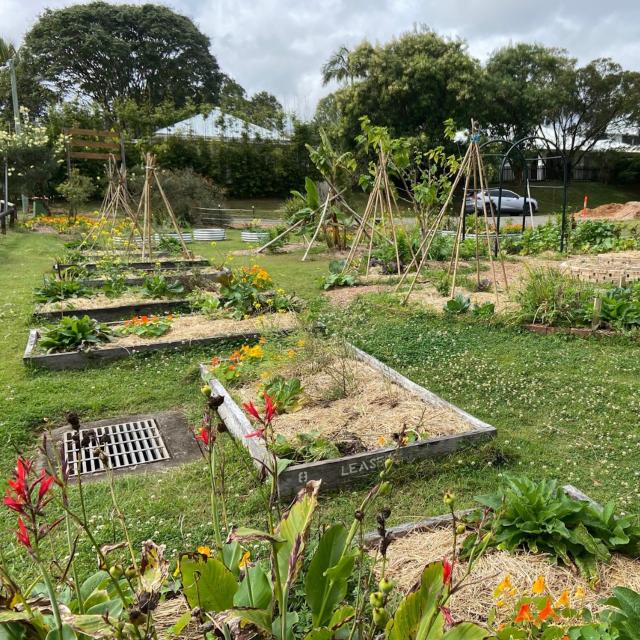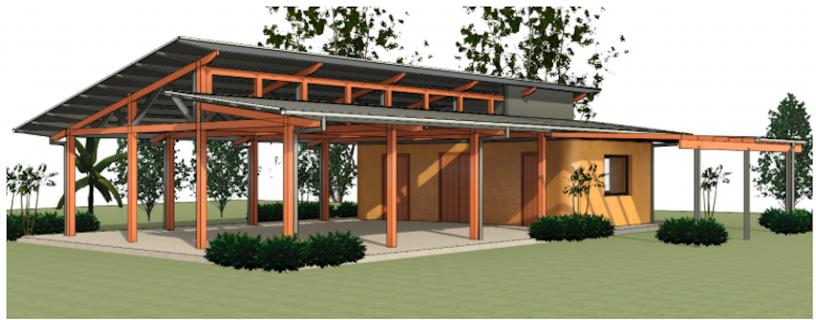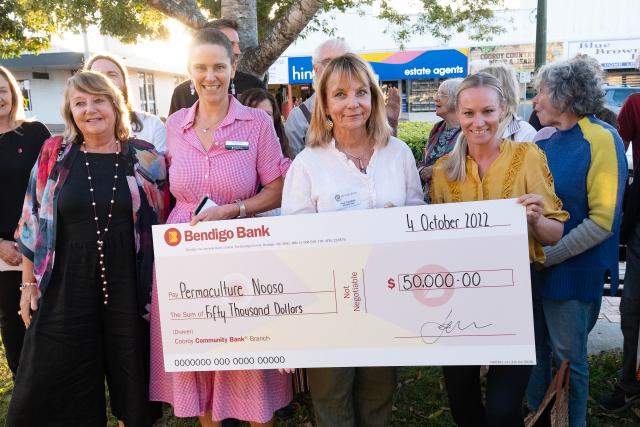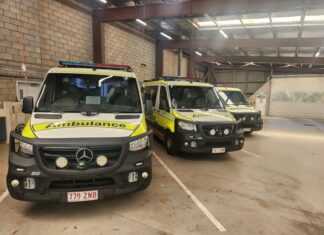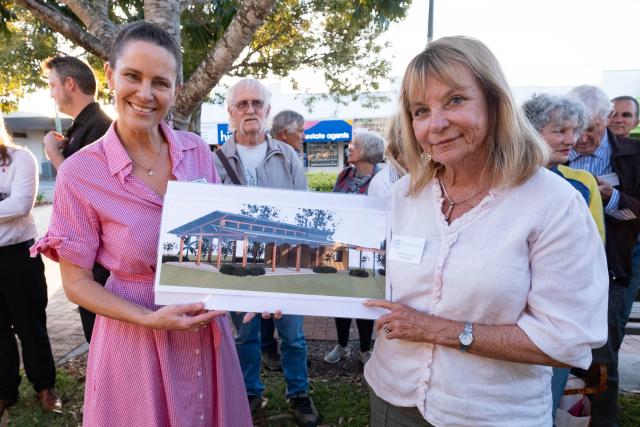
We’re only in October but Christmas came early in Cooroy last week when Bendigo Bank’s Community Bank Cooroy announced $50,000 funding to enable Permaculture Noosa to complete its multi-purpose pavilion at the Cooroy Community Gardens.
Like so many community projects, the pavilion had faltered during Covid, and now faced impossible construction cost increases after years of hard work and fundraising from Permaculture Noosa’s volunteers.
Bendigo Bank’s generosity will now make it possible to complete the project early in 2023, and the earth mothers (plus a few fathers) who are the heart and soul of the organisation were celebrating in the streets.
The Cooroy Community Gardens were originally established 30 years ago behind the Butter Factory in Maple Street, by a dedicated group that included Geoff Lawton, the founder of Permaculture Noosa, to produce food for the local community. Over time, development forced the gardens into smaller areas in town until in 2011, after a storm blew away the newly-erected garden shed, it was decided that a new location was needed to establish a bigger and better garden, secure storage sheds and eventually a community building to host workshops educating people on how to grow their own foods.
After negotiations with Noosa Council, a vacant area of land adjacent to the Cooroy Badminton Hall in Emerald Street became the new home, and the Cooroy Community Gardens became an incorporated body which allowed them to access funding. With the support of Noosa Council, local businesses and the community, the gardens began to take shape in 2013.
But by 2017 membership of the Gardens group was dwindling while Permaculture Noosa was strong, so the two organisations joined forces and PN took over the management of the gardens.
They saw that this space would be perfect for a pavilion for education, workshops and a community hub. It could be a place for expanding permaculture into cooking, and act as a permanent office for the organisation.
In 2019 plans were drawn up by Brett Grimley of Ecolibrium Designs, Eumundi, and the fundraising began. Grants were obtained from Noosa Council and from the Gambling Community Benefit fund, and the club got busy with monthly barbecues, raffles, seed sales, and open gardens. By late 2021, nearly $100,000 had been raised and things should have been well on track, however, Covid and skyrocketing building costs created seemingly impossible obstacles. The project cost soared way above the original estimates.
In 2022, Permaculture Noosa decided to spend what they had on laying the slab, getting plumbing hooked up along with the electrics, and landscaping. The club raised over $19,000 this year and was recently able to buy high quality hardwood posts and roofing iron for the project.
The next step was to hire the builder to erect the pavilion. Then the club would make the walls of the kitchen and office from crushed earth under the guidance of master builder Paul Stanke of MAXbuild Construction. But where was the money going to come from?
Enter Bendigo Bank.
On the day of the cheque handover, a thrilled Sandra Guy, vice-president of Permaculture Noosa, told Noosa Today: “The pavilion is of high quality design and will add to the built amenity of Cooroy. It is very central to the town and will be available for many other community groups to enjoy. It will be a great asset for all of Noosa.
“The pavilion and garden together will be seen as a community centre of excellence, showcasing permaculture principles and practice within Noosa and neighbouring shires. A facility which will be sought after to hold community events, and a place where people can take time out to relax in an emerging abundant garden and green space.”
Absent overseas on vacation, Permaculture Noosa president Councillor Tom Wegener contacted Noosa Today to add his congratulations to the group and to thank Bendigo Bank.
“The Permaculture Noosa and Cooroy Community Gardens pavilion is such a worthy project in so many ways, and I’m delighted to see it finally approach completion. I’m also delighted that it has been supported by the findings of the Agri-Hub symposium of the Noosa Biosphere Reserve Foundation.”

